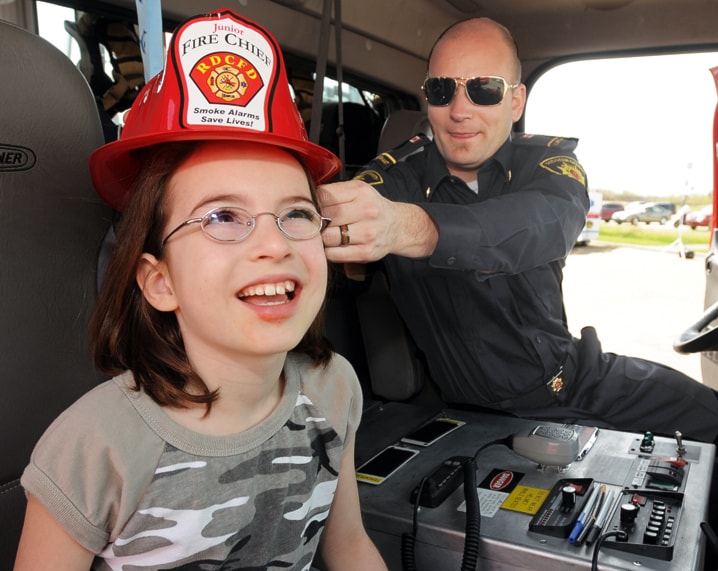Residents of Slave Lake had little warning when they were forced to flee from their homes when devastating wildfires torn through the community last May.
The tragedy was close enough to home that it opened people’s eyes to unpredictable emergency situations, says Karen Mann, City of Red Deer’s emergency management co-ordinator.
“It made them think what would we do if it happened here,” said Mann.
“People are paying attention and taking other events and applying them to their own preparedness.”
While the city is not under high risk for wildfires, one only needs to think back to the Pine Lake tornado in 2000.
In Central Alberta, there is also the potential for grass fires, flooding, hazardous material incidents, train derailments and severe weather.
As National Emergency Preparedness Week wrapped up on Saturday, the city hosted an emergency preparedness fair at Red Deer College with some of the groups called on in a large scale disaster including the City of Red Deer Emergency Services, Alberta Health Services, Canadian Blood Services, County of Red Deer, Atco Gas and other agencies.
Mann said there are three easy steps that people can do to be prepared including knowing the risks in your community, making a family emergency plan and having a 72-hour emergency kit.
“You can’t control when and where an emergency is going to happen,” said Mann. “But you can control the level of preparedness for yourself and your family.”
The emergency kit allows residents to cope on their own for the first three days of an emergency.
Some recommended items in a kit are flashlights, a radio, water, non-perishable food, can opener, first aid kit and any special medication.
Two litres of water per person per day is recommended.
By being prepared, residents will help ease the pressure on emergency services personnel during these situations.
“Remember when there is a big disaster there are still ambulance calls, fire calls and rescue calls that we have to deal with the city,” said Pete Barron, platoon chief Red Deer’s Emergency Services. “It’s not like we take everybody out of the city. We still have other calls we have to do. That puts a strain on our manpower. When you only have 32 guys on shift on a day and you send out 20 to a tornado, it doesn’t leave you too much for the rest of the city.”
To find out more on how you can be prepared visit www.getprepared.ca or www.reddeer.ca
crhyno@www.reddeeradvocate.com
